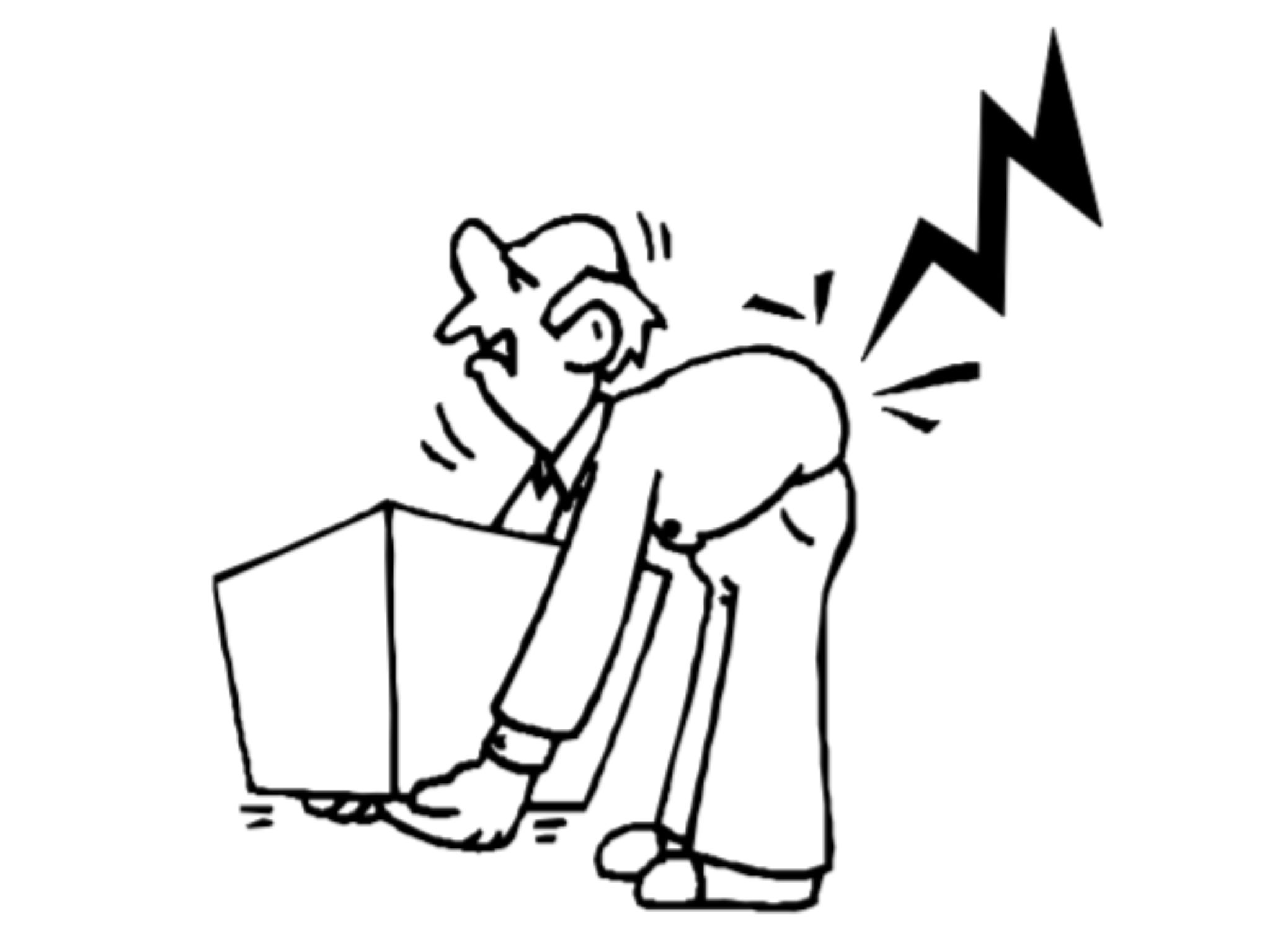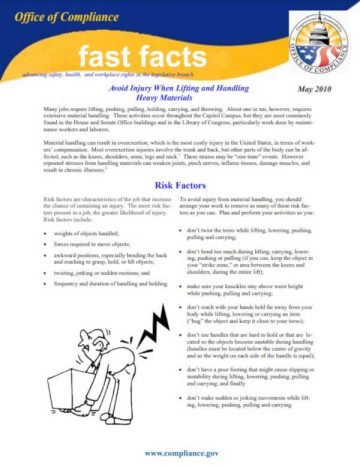Many jobs require lifting, pushing, pulling, holding, carrying, and throwing. About one in ten, however, requires extensive material handling. These activities occur throughout the Capitol Campus, but they are most commonly found in the House and Senate Office buildings and in the Library of Congress, particularly work done by maintenance workers and laborers.
Material handling can result in overexertion, which is the most costly injury in the United States, in terms of workers’ compensation. Most overexertion injuries involve the trunk and back, but other parts of the body can be affected, such as the knees, shoulders, arms, legs and neck.1 These strains may be “one-time” events. However repeated stresses from handling materials can weaken joints, pinch nerves, inflame tissues, damage muscles, and result in chronic illnesses.2
Risk Factors
Risk factors are characteristics of the job that increase the chance of sustaining an injury. The more risk factors present in a job, the greater likelihood of injury. Risk factors include:
- weights of objects handled;
- forces required to move objects;
- forces required to move objects;
- twisting, jerking or sudden motions; and
- twisting, jerking or sudden motions; and
To avoid injury from material handling, you should arrange your work to remove as many of these risk factors as you can. Plan and perform your activities so you:
- don’t twist the torso while lifting, lowering, pushing, pulling and carrying;
- don’t bend too much during lifting, carrying, lowering, pushing or pulling (if you can, keep the object in your “strike zone,” or area between the knees and shoulders, during the entire lift);
- make sure your knuckles stay above waist height while pushing, pulling and carrying;
- don’t reach with your hands held far away from your body while lifting, lowering or carrying an item (“hug” the object and keep it close to your torso);
- don’t use handles that are hard to hold or that are located so the objects become unstable during handling (handles must be located below the center of gravity and so the weight on each side of the handle is equal);
- don’t have a poor footing that might cause slipping or instability during lifting, lowering, pushing, pulling and carrying; and finally
- don’t make sudden or jerking movements while lifting, lowering, pushing, pulling and carrying.

